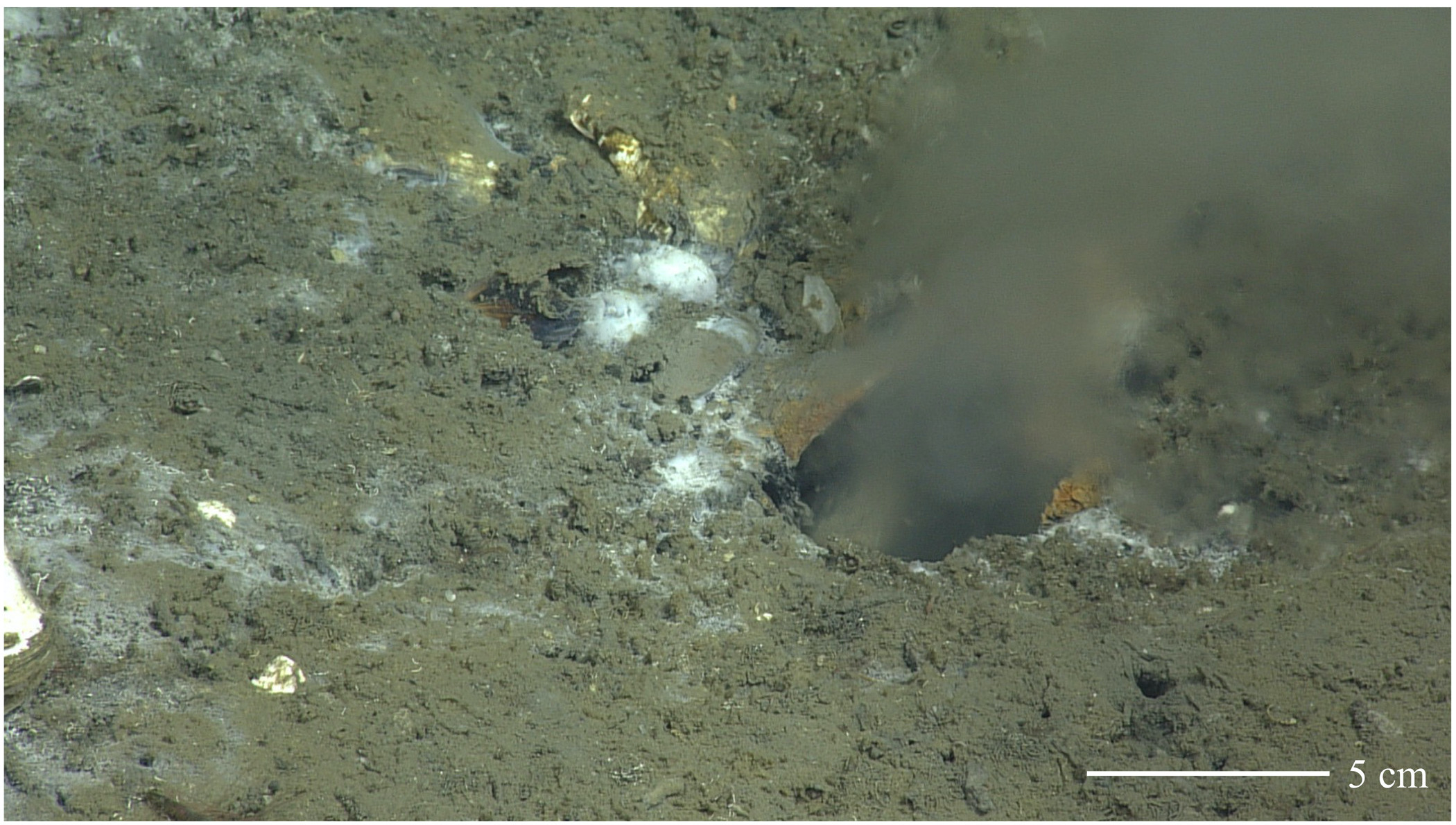 Scientists have recently discovered mysterious holes spewing fluids on the ocean floor off the coast of Oregon. Credit: Science Advances / CC BY 4.0
Scientists have recently discovered mysterious holes spewing fluids on the ocean floor off the coast of Oregon. Credit: Science Advances / CC BY 4.0A study published in the journal Science Advances recently discovered something strange: small holes on the ocean floor near Newport, Oregon, that are releasing fluids from deep within the Earth.
These vents are located around 50 miles (80 kilometers) away from the coast and are positioned around 3,412 feet (1,040 meters) below the ocean surface. Researchers have identified at least four of these vents, and each one measures approximately 2 inches (5 centimeters) across.
Further analysis of the fluids released by these vents has shown that they come from a place around 2.5 miles (4 km) deep, where the plates that make up the Earth’s surface meet.
Fluid may influence the plates tectonics causing earthquakes
The researchers called this phenomenon ‘Pythia’s Oasis,’ named after the ancient Greek Oracle of Delphi. Scientists believe that this unusual event could shed some light on the risks of earthquakes. However, they are still not sure about how it impacts the movement of the earth’s crust.
The Cascadia subduction zone is a vast area that extends from Vancouver Island to northern California. It’s the region where three oceanic plates, Explorer, Juan de Fuca, and Gorda, slide beneath the North American continental plate.
 Sonar technology shows the presence of bubble plumes at Pythia’s Oasis. Credit: Science Advances / CC BY 4.0
Sonar technology shows the presence of bubble plumes at Pythia’s Oasis. Credit: Science Advances / CC BY 4.0This boundary between the plates can generate massive earthquakes, which are some of the most powerful on our planet, as stated by the Oregon Department of Emergency Management. Such tremors could also cause tsunamis, with waves as high as 100 feet (30.5 meters).
The release of these fluids could affect how the plates interact, which, in turn, could impact the frequency and intensity of earthquakes in the area.
Demian Saffer, the director of the University of Texas Institute for Geophysics, who wasn’t involved in the study, explained to Live Science that this occurrence could change the stresses and the pressure of fluids at deeper levels where earthquakes may occur.
Vents first spotted by White House policy adviser
During a research cruise, Brendan Philip, who was then a graduate student at the University of Washington and is now a policy adviser at the White House, was the first to spot these vents.
Using the ship’s sonar, they were able to detect bubbles rising from the seafloor, explained Evan Solomon, an associate professor of oceanography at the University of Washington and co-author of the study.
He further explained that they were surprised to find not just methane bubbles but water coming out of the seafloor in a powerful stream, like a firehose. This was a new discovery that had never been seen before, to the best of Solomon’s knowledge.

 1 year ago
96
1 year ago
96











 English (US)
English (US)